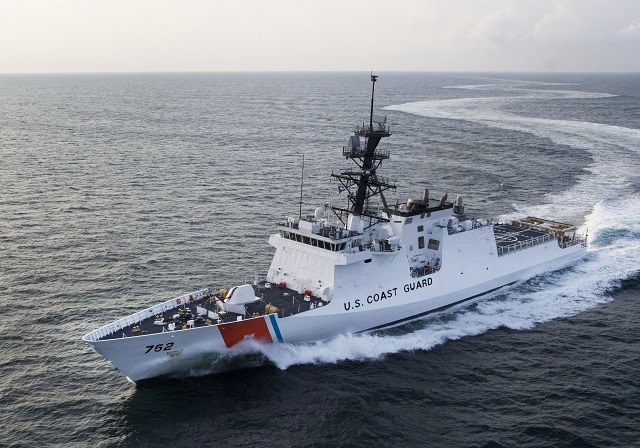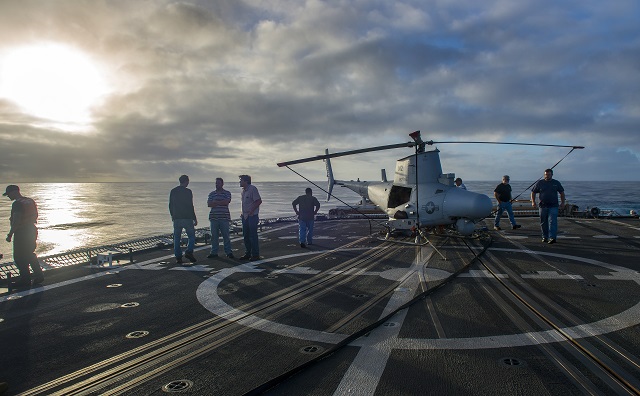Coast
Guard Research and Development Center scientists are assessing unmanned
aircraft system operations from a national security cutter during a two-week
demon- stration begun Dec. 4, 2014. On the first day of testing, 22 successful
flights were conducted from Coast Guard Cutter Bertholf. Video by Petty Officer 2nd Class Luke Clayton |
|||
Earlier this year, the Navy teamed up with the U. S.
Coast Guard Research and Development Center to coordinate the procurement
and installation of MQ-8 equipment in support of the technical demonstration.
The Navy team consisted of members from PMA-266’s Ship Integration group, NAVAIR’s Rapid Capability Engineering and Integration Department (AIR 4.11), the Integrated Systems Evaluation, Experimentation, and Test Department (AIR 5.1), Support Equipment and Aircraft Launch and Recovery Equipment Department (AIR 4.8) and members of Naval Sea Systems Command’s Unmanned and Robotics Systems Branch (G82). “The existing MQ-8 system was already 90 percent compatible with the cutter-class,” said Harsha Desai, lead engineer for the Coast Guard integration effort. “To minimize the impact to the ship, we developed a mobile ground control station configuration for our Mission Control System.” |
|||
 Legend Class National Security Cutter of the USCG (the third NSC, Stratton WMSL 752, pictured here) Picture: Ingalls Shipbuilding |
|||
The Navy will also benefit from this new configuration.
The mobile GCS provides flexibility to rapidly respond to tasking and
has the potential to drive down future integration costs, Ernst said.
The team also used the event as an opportunity to test an MQ-8B equipped with radar, which will increase the situational awareness and threat warning in a high-traffic littoral, or close to shore, environment. Deployment with this new capability is planned for next year. Since 2009, the MQ-8 Fire Scout has flown more than 14,000 operational hours, primarily in the Mediterranean, Afghanistan and Horn of Africa regions, providing intelligence, surveillance and reconnaissance support to operational forces. It recently made its first deployment with USS Fort Worth (LCS 3) in November. |
|||
US Navy Tests MQ-8B Fire Scout VTOL UAV aboard US Coast Guard Cutter Bertholf (WMSL 750)
- Posted On











